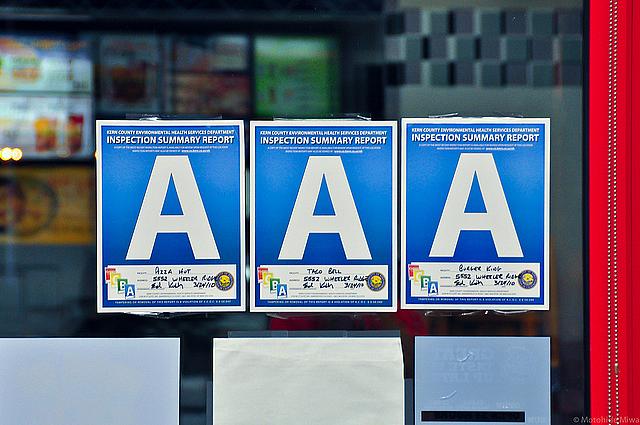The Power of Small Data: Smart data reporting starts with asking the right question

There are seven simple words that can serve as guides for how you can get the most out of data when reporting.
1. Question
2. Hunt
3. Doubt
4. Make
5. Persevere
6. Illuminate
7. Doodle
I will cover them all in this series, using real-world examples from journalists. And I’ll start with the first, because it’s really the most important. You have to start your data-driven story with a central question. Don’t just compile gigabytes of data and hope that a story will emerge. Decide what the question is that’s most crucial to your audience right now.
You’re better off asking a simple question first. Ask complicated questions only if you can answer the simple ones. And, if the question is good, it doesn’t matter if someone tells you that the question has been asked and answered.
Here’s an example.
If you live in California, you are probably familiar with restaurant ratings issued by health departments. Many counties have them. And local governments throughout the country do, too. In Los Angeles County, they use letters (A, B, C) to indicate how well a restaurant has performed during inspections.
One might assume that an “A” posted on the window of a restaurant meant that the place had no problems when it was inspected and, in fact, was the height of cleanliness, among other positive attributes.
Stephanie Baer at the San Gabriel Valley Tribune – a fellow participating in the Center for Health Journalism’s 2015 California Data Journalism Fellowship – started with a great question about restaurant ratings. Does an “A” rating mean a restaurant is really clean?
Stephanie had made a habit of looking at the health department's weekly restaurant closures. One week, she noticed something odd.
I noticed that several of the restaurants listed had A grades and I wondered how that could be. Then, when I mapped an initial set of the closure data, I noticed that the majority of the restaurants closed had A or B grades and that didn't make sense, so I decided to figure out why that was.
What she found out underscores how important it is not to assume a story has already been "done." There have been many stories over the years about the restaurants that fail the letter grading system – those that get C’s and even B’s. Roaches in the pantry. Mold on the avocadoes. Such details are always guaranteed to repulse and delight readers at the same time.
Baer questioned the assumptions underpinning the system itself. In a story titled “What that restaurant letter grade isn’t telling you about health and cleanliness,” she wrote:
The county’s grading system, which measures a restaurant’s cleanliness and food-handling practices, allows too many facilities to operate with major health threats and misleads the public about actual operating conditions in the kitchen, according to a review of 21 months of inspection data from the Los Angeles County Department of Public Health.
How did she pull together the data? She asked the Los Angeles County Department of Public Health for inspection records from July 1, 2013 to March 31, 2015. The county complied, and Baer and the team at the Tribune created an easy-to-use, easy-to-understand map for readers.
The official reaction came even before the story was published. Baer wrote:
“We need to make some changes so we won’t have the situation that people have more confidence in the letter grade than perhaps it really warrants,” said Angelo Bellomo, director of the county’s environmental health program, which is responsible for inspecting more than 39,000 retail food facilities in the county between one and three times a year.
Prompted by a review of the data by the Los Angeles News Group, county officials are considering ways to improve the widely emulated letter-grading system that has gone largely unchanged since 1998. The county Board of Supervisors asked the health department earlier this month to review the grading process, report back on problems and recommend fixes to the system.
When you’re thinking about questions to ask, you might want to ask a question that may be a matter of life and death. That’s what one reporter did when looking at HIV trends in the U.S. I’ll write about that in my next post.
[Photo by Moto Miwa via Flickr.]
Related posts
The Power of Small Data: Why you probably don’t need ‘big data’ for your stories
The Power of Small Data: How Rwanda tried to save lives with better math
